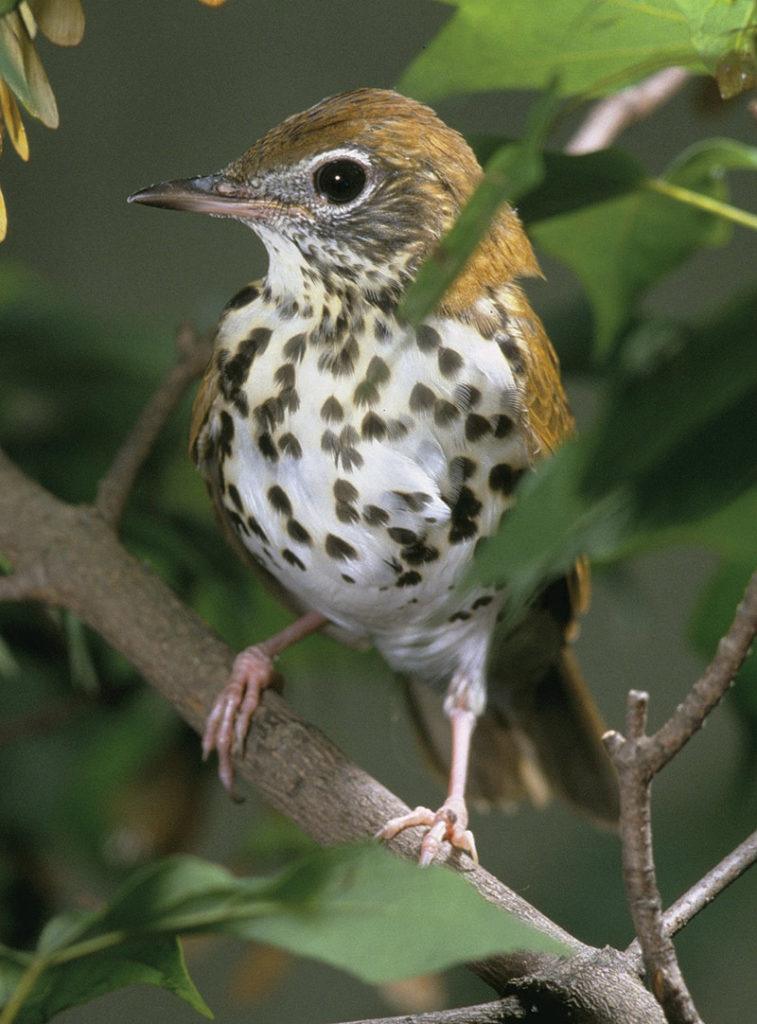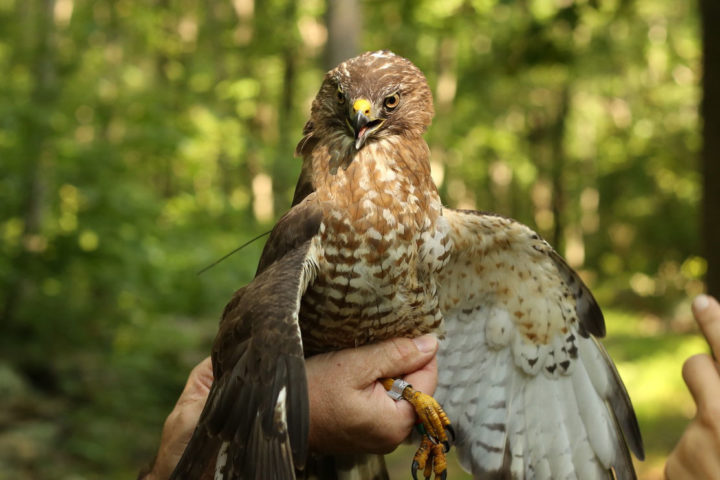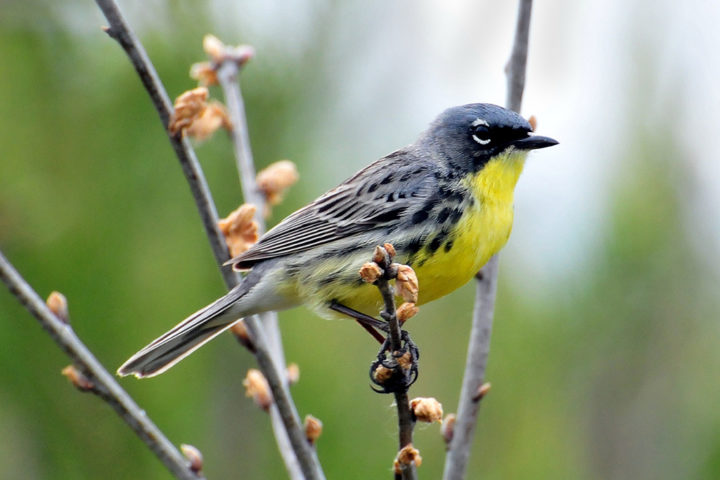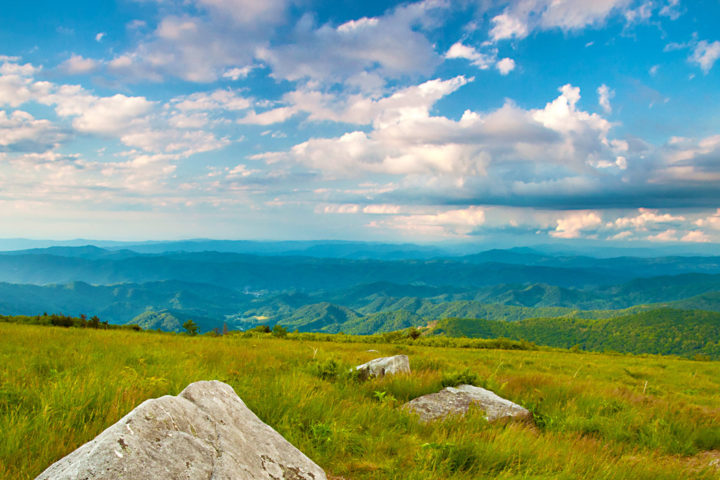By Marina Richie
Appalachian Balds Are For The Birds
January 14, 2019
To save birds, protection of habitat is paramount, and so is ecological restoration.
Resource management coordinator for ATC’s southern region, Matt Drury, looks to nature for guidance. Based in Asheville, North Carolina, one of Drury’s focal points is the open vistas of the Roan Highland balds, relics from the ice age with rare wildflowers and birds like the golden-winged warbler.

Wood thrush. Photo courtesy U.S. Fish and Wildlife Service
The balds were once kept open by wild grazing animals, but their local extinction from the area — along with a warming climate — have contributed to the shrinking of the balds on the Roan. To help preserve these balds and the species that depend on them, Drury, conservation partners, and volunteers carefully use mowers, weed whackers, and other equipment.
“In the pursuit of preserving the iconic vistas these balds provide, I try to make every area as ecologically functional as possible,” Drury says.
While preserving views, this work also leaves a soft, feathered, and diverse forest edge. With help from partners, he closed an old steep trail by planting native brambles that deter hikers and invited golden-winged warblers to nest — and they did.
Drury also turns his restoration eye to the even-age, dense forests that have come back since the “great cut”— massive clearcutting in the 1920s. He seeks to replicate the mix of ages and natural openings of the old-growth spruce forests of the Great Smoky Mountains National Park. Spruce forests shelter northern saw-whet owls, red crossbills, and brown creepers — to name a few.
“To protect biodiversity, sometimes we can’t just draw a line around things,” says Drury.
Discover More

A Premier Migration Range
What Soars Above Kittatinny Ridge
The 125 miles of the Appalachian Trail that follow Pennsylvania's Kittatinny Ridge see an incredible amount of hawk and eagle migrations.

By Marina Ritchie
Wild Skyway
Wherever you are on the Appalachian Trail, birds offer sweet companionship. Yet, as hiker numbers soar, bird populations tumble.

A Strong Future
Conservation
As stewards of the Appalachian Trail, our goal is to ensure it will be enjoyed for centuries to come.
